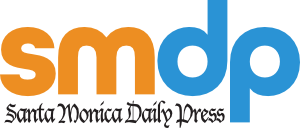Non-potable water everywhere, but not a drop you should drink. But you can use it for other things, and as of Tuesday, you should have a much better idea of how.
On Feb. 16, representatives from several local, environmentally-minded organizations, government agencies and non-profits gathered at the Pico Branch Library to present a new roadmap that will give municipalities, businesses and homeowners clear guidelines on the use of non-potable water indoors and outside.
The Los Angeles Department of Public Health, City of Los Angeles Bureau of Sanitation, City of Santa Monica Office of Sustainability and the Environment, TreePeople, Heal the Bay, and the Natural Resources Defense Council created these voluntary guidelines, known as Matrix 2.0, which officials said are the first of their kind for the county, and possibly even the state of California.
Comprised of rainwater, graywater, stormwater and blackwater, cooling tower blow-down water, condensate, and foundation drainage, non-potable water is water that is not intended for drinking, but is still of import for the many ways it can be used.
Among those who spoke at Tuesday's press conference and signing of Matrix 2.0 was Mayor Tony Vazquez, who addressed how the guidelines will help the City of Santa Monica reach its sustainable water master plan of 100 percent local self-sufficiency by 2020.
“This matrix is an important standard and step toward helping us achieve this goal,” Vazquez said. “While harvesting and using graywater, rainwater, stormwater and recycled water are legal, we have lacked a clear, comprehensive, consistent and streamlined regulatory process so that alternative water supplies are attractive for private and residential users.
“Besides our water solutions on site, rain harvesting eliminates stormwater, which carries pollution to our bay and helps our cities meet clean water acts requirements of the NPDES permit. This strategy is especially important for our new permit, which includes enhanced watershed management plans that emphasize the use of low-impact development solutions working with nature to keep local rain for beneficial uses.”
Vazquez believes that the new standard set by Matrix 2.0, which expands the uses of alternative water to indoors, is a “critical factor.”
“Outdoor use is fine, but during this winter when it rains, hopefully pretty soon, we do not need to use our harvest rainwater for irrigation. Better to use indoor when our landscapes are wet, as well as store rainwater for the drier spring and every summer.”
Vazquez also took the time to praise the location of the press conference for its underground cistern project, which supplies water for indoor toilet flushing.
“Standing here in front of this library, which is one of our models and our starships … the strategy behind it is to capture a lot of our rainwater and harvest it for graywater, flushing, and many of the irrigation that you see here on the parks; as well as this parking lot is set up to capture a lot of our rainwater and retain it on site without going into our storm drains.”
Vazquez hopes going forward other cities will begin to follow suit with similar guidelines to Matrix 2.0 and Santa Monica's water sustainability goal.
TreePeople founder, Andy Lipkis, believes Matrix 2.0 will have a “huge impact” in helping the City of L.A. reach its goal of 50 percent local water and Santa Monica reach its “ambitious” 2020 plan.
Lipkis referenced how Australia dealt with its decade-plus drought as a way to look at how the local community can ban together.
“The goal here is to get everyone involved, because we need everyone to play,” Lipkis said. “[Australia] went through a 12 year drought that was devastating for the country, and in reorganizing their water systems and engaging the public fully, with everybody playing a role as manager of the water, they got through. And by distributing the responsibility and opportunity and job to the whole population, where people could capture water at home, they really stepped up. In some cases harvesting that rainwater nearly doubled their supply.”
Lipkis emphasized the importance of the matrix in reducing the expense of importing water, in every sense of the word, calling it “expensive because of energy, expensive because of the cost of pumping, expensive because of the destruction to the environment.”
“All the water that we bring in from the southwest, as we harvest rainwater, that represents almost half the water that the City of L.A. needs and maybe even more of what Santa Monica needs. As we harvest that locally and put it toward multiple uses, we begin to truly protect the environment and live sustainably.”
According to a press release, Matrix 2.0 provides governments with a real, tangible standard to follow for collection and treatment, giving the public a way to design a non-potable water system that can actually be approved for use; safeguards the public health while promoting decentralized, on-site alternative water use; establishes monitoring and testing parameters to ensure a system functions over time; compliments standards found in the NPDES Clean Water Act permit and EWMPS (enhanced watershed management plans) water quality standards through the use of non-potable water; and develops a simple, effective process of approving plans and inspecting systems to encourage the public to build the systems, and allow jurisdictions to approve them.
End users of the guidelines can expect to save money and energy resources by expanding use of alternate water to indoor uses, in addition to outdoor use and harvest rainwater on-site to eliminate runoff, which carries pollution to the ocean.
“I know it sounds really nerdy the way we're talking from all our agency perspectives but [Matrix 2.0] really does represent an incredible breakthrough moving forward,” Lipkis said.
jennifer@www.smdp.com








